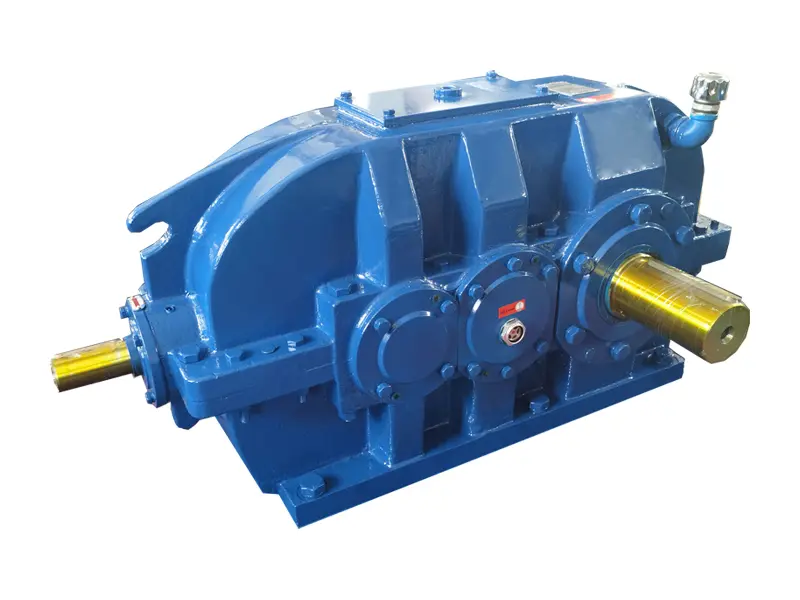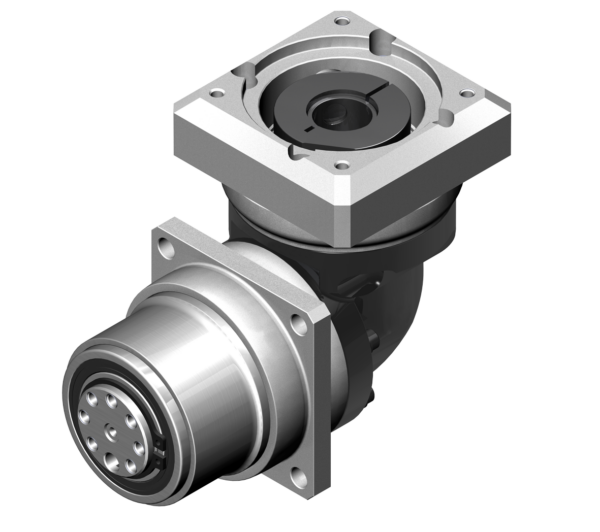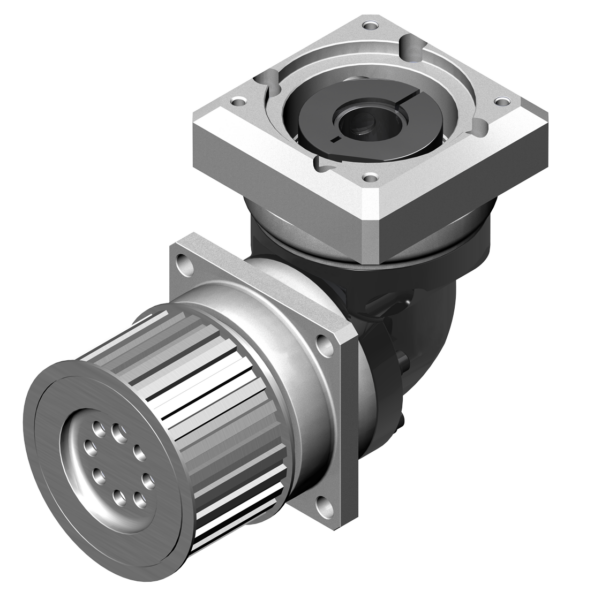Product Description
Helical Gear High Precision Planetary Gear Box For Servo motor Small Gearbox manufacture
High precision planetary gearbox matched with serve motor, stepping motor are widely used. Lowest backlash<3"); High output torques; High efficiency(96%); Honed toothings; 22 ratios I=3, …., 512; Low noise(<65dB(A)); Any mounting position; Easy motor mounting; Life time lubrication; Figure diameters 40, 60, 80, 120, 160mm. More options.
Planetary gearbox:
ZDE: Precision planetary-round flange output
ZDF: Precision planetary-square flange output
ZDWE: Precise planetary-right angle round flange output
ZDWF: Precise planetary-right angle square flange output
ZDS: Precise planetary-high rigidity, low back lash
ZDR: Helical Gear High Precision Planetary Gear Box
| Rated output torque | N. M | 4.5-1800 |
| Instant stop torque | N. M | Two times of rated output torque |
| Life | Hour | 30, 000 |
| Full load efficiency | 90%, 94%, 96% | |
| Operating temperature | ° C | -25—+90 |
| IP | IP54 | |
| Lubrication type | Lifetime lubrication | |
| Mounting type | Any |
| Product type | PL40 | PL60 | PL80 | PL120 | PL1600 | |
| Torsional stiffness | N. M/arcmin | 0.7 | 1.8 | 4.5 | 12 | 38 |
| Noise | dB(A) | 55 | 58 | 60 | 65 | 70 |
| Max output speed | Min | 10000 | 8000 | 6000 | 6000 | 6000 |
| Recommend input speed | Min | 4500 | 4000 | 4000 | 4000 | 3000 |
Company Information
FAQ
Q: What’re your main products?
A: We currently produce Brushed Dc Motors, Brushed Dc Gear Motors, Planetary Dc Gear Motors, Brushless Dc Motors, Stepper motors, Ac Motors and High Precision Planetary Gear Box etc. You can check the specifications for above motors on our website and you can email us to recommend needed motors per your specification too.
Q: How to select a suitable motor?
A:If you have motor pictures or drawings to show us, or you have detailed specs like voltage, speed, torque, motor size, working mode of the motor, needed lifetime and noise level etc, please do not hesitate to let us know, then we can recommend suitable motor per your request accordingly.
Q: Do you have a customized service for your standard motors?
A: Yes, we can customize per your request for the voltage, speed, torque and shaft size/shape. If you need additional wires/cables soldered on the terminal or need to add connectors, or capacitors or EMC we can make it too.
Q: Do you have an individual design service for motors?
A: Yes, we would like to design motors individually for our customers, but it may need some mold developing cost and design charge.
Q: What’s your lead time?
A: Generally speaking, our regular standard product will need 15-30days, a bit longer for customized products. But we are very flexible on the lead time, it will depend on the specific orders.
Please contact us if you have detailed requests, thank you !
| Application: | Power |
|---|---|
| Phase: | Single |
| Certification: | CCC |
| Usage: | Distribution Transformer |
| Manufacture Name of Servo Motor 1: | Panasonic |
| Manufacture Name of Servo Motor 3: | Miki Pulley |
| Customization: |
Available
| Customized Request |
|---|

Are there any limitations or disadvantages associated with pulley gearbox systems?
While pulley gearbox systems offer several advantages, they also have certain limitations and disadvantages that should be taken into consideration. Here’s a detailed explanation of some of the limitations and disadvantages associated with pulley gearbox systems:
Limited Gear Ratio Range: Pulley gearboxes have a limited range of gear ratios compared to other types of gearboxes, such as spur or planetary gearboxes. The gear ratio range is determined by the available pulley sizes and configurations. In some cases, achieving extremely high or low gear ratios may require impractically large or small pulleys, which can limit the design flexibility and operational range of the gearbox.
Slippage and Belt Tension: Pulley gearboxes rely on belts or ropes to transmit power between the driving and driven pulleys. However, these flexible power transmission elements can experience slippage under certain conditions, leading to a loss of efficiency and accuracy in power transmission. Maintaining proper belt tension is crucial to minimize slippage, but it requires regular monitoring and adjustment. Additionally, excessive belt tension can lead to increased wear and tear on the belts and pulleys.
Limited Precision and Backlash: Pulley gearboxes may have limitations in terms of precision and backlash compared to other gearbox types. Backlash refers to the slight movement or play that occurs when switching rotational direction in the gearbox. While backlash can be minimized through careful design and manufacturing techniques, pulley gearboxes may have inherent backlash due to the nature of the flexible power transmission elements, such as belts or ropes. This can impact the accuracy of motion control applications that require precise positioning or synchronization.
Limited Power Transmission Capacity: Pulley gearboxes may have limitations on their power transmission capacity compared to gearboxes with rigid gear elements, such as spur or helical gearboxes. The power transmission capacity of a pulley gearbox depends on factors such as the strength and material of the belts or ropes, as well as the pulley sizes and configurations. In applications that require high torque or heavy-duty operation, other types of gearboxes may be better suited due to their ability to handle greater power transmission requirements.
Maintenance and Belt Replacement: Pulley gearboxes require regular maintenance, including belt inspection, adjustment, and replacement. Belts are subject to wear and aging over time, and their performance can deteriorate, leading to reduced efficiency and increased risk of failure. Maintaining proper belt tension, monitoring belt condition, and scheduling regular belt replacements are necessary to ensure the reliable operation of pulley gearboxes. This maintenance requirement adds to the overall cost and effort associated with operating pulley gearbox systems.
Complexity with Multiple Pulley Systems: Pulley gearboxes that incorporate multiple pulleys and complex configurations can introduce additional complexity in terms of design, installation, and maintenance. The interaction of multiple belts or ropes, as well as the adjustment of various pulley sizes and positions, can become more challenging, requiring careful alignment and synchronization. This complexity can increase the risk of misalignment, slippage, or other operational issues if not properly managed.
Space and Layout Considerations: Pulley gearboxes, especially those with multiple pulleys, may require more space compared to other compact gearbox designs. The size and arrangement of the pulleys can impact the overall dimensions and layout of the gearbox system. This can be a limitation in applications with limited space or specific installation constraints where compactness is a critical requirement.
Despite these limitations and disadvantages, pulley gearbox systems remain widely used and provide practical solutions in many applications. The key is to carefully assess the specific requirements of the application and consider factors such as torque, speed, precision, power transmission capacity, maintenance needs, and space constraints to determine if a pulley gearbox is the most suitable choice.

How do gear ratios in pulley gearboxes impact their performance?
The gear ratios in pulley gearboxes have a significant impact on their performance, influencing factors such as speed, torque, and power transmission efficiency. By adjusting the gear ratios, the performance characteristics of the pulley gearbox can be tailored to meet specific application requirements. Here’s a detailed explanation of how gear ratios affect the performance of pulley gearboxes:
Speed: The gear ratio determines the speed relationship between the driving and driven pulleys in a pulley gearbox. A higher gear ratio, achieved by using a smaller driven pulley or a larger driving pulley, results in a slower output speed compared to the input speed. Conversely, a lower gear ratio, achieved by using a larger driven pulley or a smaller driving pulley, leads to a higher output speed. By selecting the appropriate gear ratio, the speed of the driven pulley can be adjusted to meet the desired operational requirements.
Torque: Gear ratios also affect the torque output of the pulley gearbox. The torque is inversely proportional to the gear ratio, meaning that a higher gear ratio results in increased torque at the driven pulley, while a lower gear ratio reduces the torque. This is due to the mechanical advantage provided by the pulley system. By adjusting the gear ratio, the torque output can be optimized to match the torque requirements of the load being driven by the gearbox. Higher gear ratios are useful in applications that require greater torque, such as lifting heavy loads, while lower gear ratios are beneficial for applications that prioritize higher rotational speed.
Power Transmission Efficiency: The gear ratios play a role in determining the power transmission efficiency of pulley gearboxes. Generally, pulley gearboxes with higher gear ratios tend to have lower power transmission efficiency. This is primarily due to increased friction and energy losses associated with the mechanical advantage provided by smaller driven pulleys or larger driving pulleys. On the other hand, lower gear ratios typically result in higher power transmission efficiency. To optimize the overall performance of the pulley gearbox, it is essential to select gear ratios that strike a balance between the desired speed, torque, and power transmission efficiency.
Operational Range: The range of operation of a pulley gearbox is influenced by the available gear ratios. Different gear ratios provide different speed and torque ranges, allowing the gearbox to adapt to a variety of load conditions. By incorporating multiple pulleys, adjustable pulley systems, or variable speed drives, pulley gearboxes can offer a broader operational range. This flexibility enables the gearbox to handle a wide range of applications and accommodate varying speed and torque requirements.
System Design: Gear ratios also impact the overall design of the pulley gearbox. The selection of gear ratios influences the size, arrangement, and number of pulleys required in the system. Higher gear ratios may require smaller driven pulleys or larger driving pulleys, which can influence the physical dimensions and layout of the gearbox. It is important to consider the space constraints, load requirements, and other design considerations when determining the optimal gear ratios for a pulley gearbox.
In summary, gear ratios in pulley gearboxes have a significant impact on their performance characteristics. By adjusting the gear ratios, the speed, torque, power transmission efficiency, operational range, and overall design of the pulley gearbox can be tailored to meet specific application requirements. Careful consideration of the desired performance parameters is essential when selecting and designing pulley gearboxes to ensure optimal performance and efficient power transmission.

Can you explain the different types of pulley gearboxes and their specific functions?
There are several different types of pulley gearboxes, each with its specific functions and applications. These variations in design and configuration allow pulley gearboxes to cater to diverse requirements in power transmission and speed control. Here’s an explanation of the different types of pulley gearboxes and their specific functions:
- Fixed Ratio Pulley Gearbox: This type of pulley gearbox consists of two pulleys of different sizes that are fixed to their respective shafts. The driving pulley and the driven pulley are connected by a belt or rope. The fixed ratio pulley gearbox is primarily used for speed conversion, where the rotational speed is either increased or decreased while maintaining a constant ratio between the input and output shafts. It is commonly employed in applications where a specific speed conversion is required, such as in conveyor systems or certain types of machinery.
- Variable Ratio Pulley Gearbox: Also known as a variable speed pulley gearbox or a stepless transmission, this type of gearbox allows for continuous and stepless variation of the speed ratio between the input and output shafts. It typically consists of two conical pulleys connected by a V-belt or a similar mechanism. By adjusting the distance between the two pulleys, the effective diameter of the pulleys changes, resulting in variable speed ratios. Variable ratio pulley gearboxes are commonly used in applications that require smooth and precise speed control, such as in automotive transmissions, industrial machinery, and exercise equipment.
- Compound Pulley Gearbox: A compound pulley gearbox utilizes multiple pulleys arranged in a series or parallel configuration to achieve complex speed and torque conversions. It involves intermediate pulleys and idler pulleys to redirect the belt or rope path. Compound pulley gearboxes offer versatility in speed control and power transmission, allowing for a wide range of speed and torque ratios. They find applications in various industrial systems, including complex machinery, assembly lines, and material handling equipment.
- Reversible Pulley Gearbox: This type of pulley gearbox is designed to provide bidirectional power transmission. It typically consists of two pulleys of the same size connected by a belt or rope. By shifting the belt or rope to different positions on the pulleys, the direction of power transmission can be reversed. Reversible pulley gearboxes are commonly used in applications where the ability to change the direction of rotation is required, such as in winches, hoists, and certain types of machinery.
- Step-Up and Step-Down Pulley Gearbox: Step-up and step-down pulley gearboxes are designed to either increase or decrease the rotational speed and torque between the input and output shafts. Step-up pulley gearboxes have a smaller driving pulley and a larger driven pulley, resulting in higher output speed and lower torque. They are used in applications where high-speed operation is required, such as in certain types of machine tools. Step-down pulley gearboxes have a larger driving pulley and a smaller driven pulley, resulting in lower output speed and higher torque. They are commonly used in applications that require high torque, such as in heavy-duty machinery and equipment.
The specific functions of pulley gearboxes are determined by their design, configuration, and the requirements of the application. By selecting the appropriate type of pulley gearbox, engineers and designers can achieve the desired speed control, power transmission, and adaptability for a wide range of industrial applications.


editor by CX 2023-09-21
